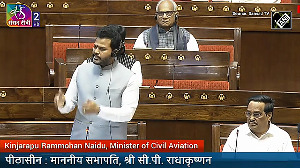 Viewing India as one of its key markets, professional networking website LinkedIn is looking at bringing out features specific for the users in the country, apart from expanding its product development team here.
Viewing India as one of its key markets, professional networking website LinkedIn is looking at bringing out features specific for the users in the country, apart from expanding its product development team here.
India has the second-largest user base for LinkedIn after the US.
The US-based company, which has over eight per cent of its global user base of 332 million from India, is looking at expanding its product development team in the country, Michael Korcuska, vice-president of product management at LinkedIn told Business Standard.
Korcuska said while so far, the Indian product designers have mostly been engaged in building 'bits and pieces' of global products, the company is increasingly looking at building products with local flavours in India.
These products may also be applicable for some other geographies.
LinkedIn already offers certain features, particularly in the recruitment space, which are specifically for India.
“There are very few geographies that we work on with the level of effort that we put into India. After the US, India is our key focused geography,” he said.
Additionally, the company is encouraging its Indian employees to share their understanding of the market with the teams sitting across the globe, to enable them to build their products accounting this large market.
“Part of the responsibility of the team in India is to make sure that the whole company understands what the needs of the users in this region are because they are a large segment of our overall user population,” Korcuska said.
“We want local market expertise — product management, design, product marketing, etc. India has been an important enough market for us, both from the end user and on the enterprise side. So, we believe it is important to have people who are really immersed in the market in order to bring perspective about the needs of the members that we have in India,” he added.
Even as LinkedIn looks at localising for India, it currently has no plans to launch a Hindi version of the website. LinkedIn is currently available in 22 languages, which do not include any Indian ones except English.
“For India, we are happy with English, keeping in mind the population we are targeting here. Most of the knowledge workers in India are very comfortable with English,” Korcuska said. “But our long-term vision is to provide an opportunity for everyone in the global workforce, and as we get into targeting those users, we will need Hindi and other Indian languages. But that’s far away, not right now.”
While the company did not share the break-up of its headcount in India, the product development team in the country is the second largest after the US. Korcuska said the company has strengthened its product develop team in the country this year, and would continue to do so in the coming times.
“There has always been a lot of engineering talent here and it’s great to see emerging product talent as well,” he said. “We will undoubtedly expand our team. The degree to which we will expand it depends on how successful they are, and I am sure they will be quite successful.”
While it acquired SlideShare (a product developed in India), LinkedIn is also open to buying more such innovative software products that may be strategic for it. The company, however, is not too keen on partnering with any software startup for product development.











